#Spanish Norman
Text
25 Most Beautiful Horses on Planet Earth
Watch video of ”25 Most Beautiful Horses on Planet Earth” video by @4EverGreenYT
TAG:
Friesian,
Marwari Horse,
Arabian Horse,
Fjord Horse,
Appaloosa,
Brumby,
The Oldenburg,
Shetland Pony,
Falabella,
Yakut Horse,
Spanish Norman,
Katria
Watch video below…
25 Most Beautiful Horses on Planet Earth
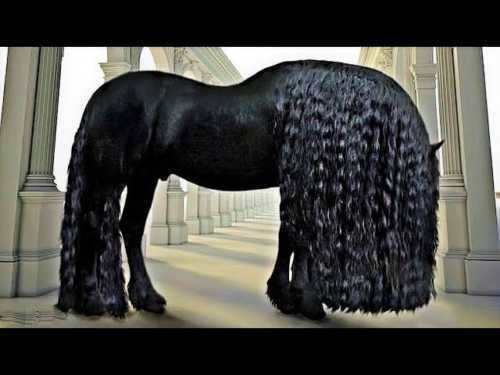
View On WordPress
#Appaloosa#Arabian Horse#Brumby#Falabella#Fjord Horse#Friesian#Katria#Marwari Horse#Shetland Pony#Spanish Norman#The Oldenburg#Yakut Horse
5 notes
·
View notes
Text
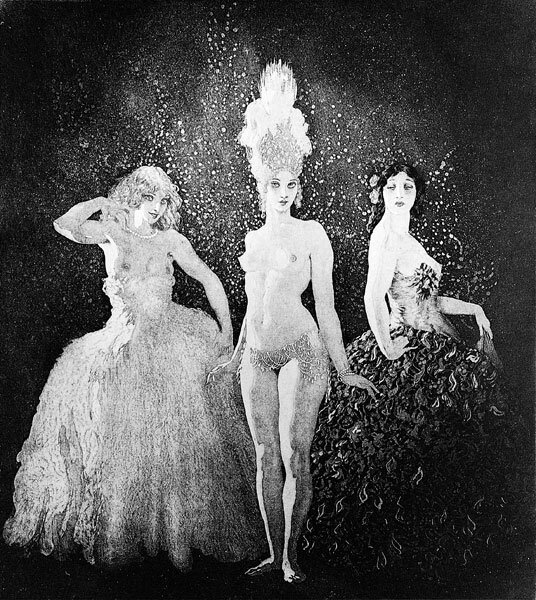


Illustrations by Australian artist Norman Lindsay (1879-1696)
"Three Dresses"
'The Eighties" and 'Spanish Lady"
#norman lindsay#mdpillustration#illustration#20th century#fantasy#historical#spanish costume#early 20th century#drawing#19th century#late 19th century
181 notes
·
View notes
Text

I love people learning how language works
#Spanish is a mix of Latin old Spanish Arabic basque and indigenous languages#English is a mix of old English and Norman French#And so forth
47 notes
·
View notes
Text
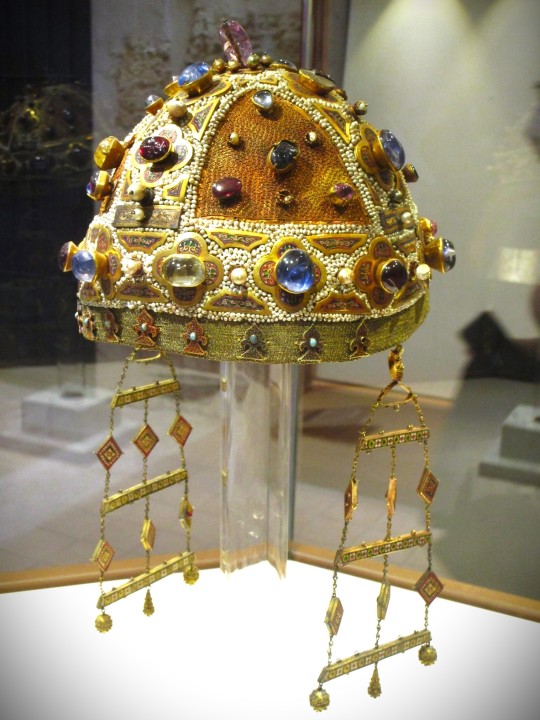
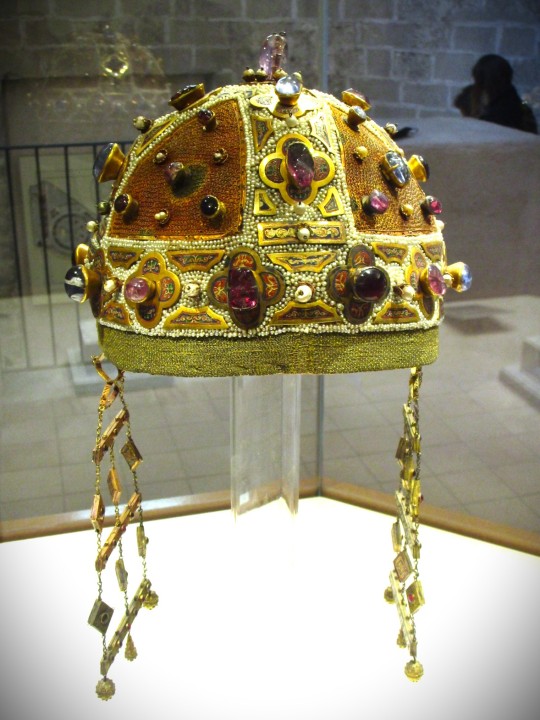
Constance of Aragon's Crown - c. 1220-1222, gold and gilded silver filigree, glazes, pearls, and polychrome stones - in the Treasury of the Cathedral of Palermo, Sicily - Photos by Charles Reeza
As the result of arranged marriages negotiated by her brother, Constance became the Queen of Hungary at the age of 19, the Queen of Sicily at the age of 30 when she married King Frederick II (who was only 14 years old), Queen of Germany when she was 36 and Frederick was crowned King of Germany, and at the age of 41, when her husband became the Holy Roman Emperor, she was crowned Holy Roman Empress with this crown. She died of malaria at the age of 43 and was entombed in the Palermo Cathedral, in a Roman sarcophagus, wearing her crown.
171 notes
·
View notes
Text

Norman Bogner - Spanish Fever - Mayflower - 1970
#witches#spaniards#occult#vintage#spanish fever#mayflower#mayflower books#norman bogner#philanderers#corrupted women#spain#fever#1970#candle holder
16 notes
·
View notes
Text

Fashion has the same origin as faction. Both words stem from Latin factiōnem and were exported by the French. However, fashion comes from Old Norman façon, which had come to mean 'manner; form', while faction derives from the written Latin form.
#historical linguistics#linguistics#language#etymology#english#latin#french#dutch#spanish#portuguese#catalan#middle english#old norman#old picard#picard#middle dutch#lingblr#old french
53 notes
·
View notes
Photo

"I am Manfredi, grandson to the Queen
Costanza: whence I pray thee, when return'd,
To my fair daughter go, the parent glad
Of Aragonia and Sicilia's pride;
And of the truth inform her, if of me
Aught else be told. [...]
Look therefore if thou canst advance my bliss;
Revealing to my good Costanza, how
Thou hast beheld me, and beside the terms
Laid on me of that interdict; for here
By means of those below much profit comes.
Dante Alighieri, Divine Comedy, Purgatory, III, 112-117 & 141-145
Costanza was born around 1249 to Manfredi of Sicily and his first wife Beatrice of Savoy ("et filiam suam Constantiam, quam ex prima consorte sua Beatrice filiam quondam A. Comitis Sabaudiae"). The exact date is unknown, but historian Saba Malaspina attests that when she was born, her grandfather was still alive (“imperatore vivente"). As for the place, it might have been one of the Apulian castles where the Emperor settled down in the last period of his life.
Her wet nurse was Bella d’Amico, mother of admiral Roger of Lauria. Bella, while she was alive, never parted from Costanza, acting like a mother and confidante, especially since Beatrice of Savoy, Manfredi’s first wife, had died when her daughter was just months old.
Nothing is known about Costanza’s childhood. She’s first mentioned when Berthold von Hohenburg asked for her hand on behalf of his nephew Januarius, son of his brother Diepold VIII. Berthold had married Isotta Lancia, cousin of Manfredi’s mother Bianca, and certainly intended to deepen his relationship with the Hohenstaufen’s family. Manfredi, on the other hand, was strenghtening his position (to the point he would be crowned on August 1258 King of Sicily, despite the true heir, his nephew Corradino was still very much alive, although far away in Germany) and so he could afford to reject this marriage proposal.
From a princess of low importance (despite the pretentious name which honored her great-grandmother Costanza I), Costanza soon became a valuable asset and, until Manfredi’s second marriage to Epirote princess Elena Angelina Doukaina, her father’s heir. The Sicilian King then started looking for an important match for his daughter, and ended up selecting Peter, son of Aragonese King James I.
Marriage agreements required that Manfredi supplied his daughter of a dowry of 50000 golden ounces (worth in gold, silver and jewels). On the other hand, the Aragonese crown committed to return the dowry to her family if Costanza were to die without heirs. She would also act as regent for her children (until they were 20 years old) in case Peter were to die before her. In addition, the Sicilian princess was given personal ownership of the city of Girona and the castle of Cotlliure.
Still, the future union presented some problems. First of all, that 50000 golden ounces dowry was indeed a large amount. Manfredi had an hard time collecting it (he had to increase taxes and that spread discontent among the population) and a lot of time passed before the Aragonese crown could collect it (alongside with the bride). The Papacy was obviously against this marriage, and Urban IV asked James I to give up to this union to avoid disgracing his House. Furthermore, in order to save the plans of the future marriage between his daughter Isabella and the heir to the French throne, James had to promise King Louis IX to not support Manfredi in his fight against the Papacy, as well as not helping Provençal rebel Bonifaci VI de Castellana against Charles of Anjou (the King’s younger brother).
Despite all the external pressure, James didn’t give up to the Sicilian match and on July 13th 1262, Peter and Costanza got married in the church of Notre-Dame des Tables (Montpellier). The difference between the lavish Hohenstaufen court and the more simple Aragonese one was huge (“And the said King Manfred lived more magnificently that any lord in the world, and with greater doings, and with greater expenditure”), but thanks to the accounting records of the time, we know that James and Peter tried their best to meet Costanza’s need, purchasing large amounts of luxury items. Since the incomes deriving from Girona and Cotlliure weren’t enough, she was given an annual pension worthy of 30000 Real de Valencia (a type of billon coin) which also soon wasn’t enough to cover the expenses.
Following the death of Manfredi in the Battle of Tagliacozzo (1266) against Charles of Anjou, many of his former supporters (or simply people linked to him, like the former Nicaean Empress as well as his sister Costanza) fled the Kingdom of Sicily and took refuge in Aragon. The death of Corradino (executed in Naples in 1268 by order of Charles after the Battle of Benevento) and the fact that Manfredi’s sons from Helena Doukaina were just children and in French hands (they will die in captivity years later), made Costanza the only legitimate heir to the Sicilian crown. Starting this moment Costanza started being referred as queen (not infanta or madama) in the documents of the Aragonese Chancellery.
In 1276 James I died, and so Peter was crowned king of Aragon. In the meantime, Costanza had already given birth in 1265 (November 4th) to the firstborn and heir, Alfonso. Followed by another male, James (April 10th 1267), and then Isabella, future Queen consort of Portugal (1271), Frederick (December 13th 1272), Yolanda (1273) and finally Peter (1275). According to historian Muntaner, although it wasn’t a love marriage, Peter and Costanza came to care for each a lot and “there were never was so great love between husband and wife as there was between them, and always had been”.
On Easter 1282, Sicilians started their revolt against the French rule, starting the so called Sicilian Vespers. Peter was quick to reclaim the crown of Sicily and Apulia on behalf of his wife. To the eyes of many Sicilian nobles the King of Aragon could be considered their legitimated master due his marriage to Queen Costanza (”nostre natural senyor, per raho de la regina e de sos fills” ). Before leaving headed for Africa (from where he would launch his invasion of Sicily), Peter named Costanza and their son Alfonso regents of the Kingdom of Aragon during his absence. As soon as he took possession of the island, Peter asked his wife and their children James, Frederick and Yolanda to join him. When the Queen arrived in Trapani in the spring of 1283, she received a warm welcome and was saluted by the people as their natural leader (”cela qui era lur dona natural”; Bernat Desclot, Llibre del rei en Pere d'Aragó e dels seus antecessors passats, ch. 103).
It is around this period that her strained relationship with lady-in-waiting and de facto second lady of the Island, Macalda di Scaletta (wife of Alaimo da Lentini, Grand Justiciar of the Kingdom of Sicily), was born. Macalda, who is described by historical sources as an ambitious and greedy woman, had tried to seduce Peter of Aragon, but without success. Since the King had declared himself devoted to his wife, the Sicilian baroness developed a burning hate towards her rival, the Queen.
In Messina, Costanza could finally embrance her husband again, but their meeting only lasted three days and it was their last. The King named his wife Regent of the Kingdom of Sicily (“Quant lo rey hac estat ab sa muller e ab sos infants en la ciutat de Mecina, e hac stablit sos balles e sos vicaris per tota Cecilia, si los feu comandament que tots fessen lo manament de la reyna e de son fill En Jaume, axi com perell, e comana la reyna als homens de Cecilia e de Mecina, e sos fills”) and returned to Aragon as his rival, Charles of Anjou, had proposed a trial by combat (who would never take take place) to be ideally fought in Bordeaux to decide the fate of the contended Kingdom. Peter died two years later in Villafranca del Penedès (Catalonia), on November 11th 1285.
Before leaving Sicily, Peter had declared that the Kingdom wouldn’t be merged into the Aragonese-Catalan territories, mantaining his autonomy, and that in thet future the succession of the two reigns would be handled separately, specifically with the Sicilian throne bequeated to the second son (at that time, James, already named Lieutenant of the Realm).
With Peter dead, Costanza didn’t choose to rule over Sicily by herself despite being its titular queen, but, as it had already been decided, relinquished her rights to her second son James (although she would keep managing the island on his behalf), while Alfonso succeeded his father. In accord to the pre-nuptial arrangements, the Dowager Queen supported her teen son in the matter of ruling the Kingdoms he had inherited.
In 1284, Costanza’s milk brother, Roger of Lauria carried out a successful expedition in the Gulf of Naples. The admiral captured Charles of Salerno, the Angevin heir, and took him in Messina, where he was saved by the angry mob thanks to the intervention of the Dowager Queen. During the same raid, Lauria had freed Princess Beatrice of Hohenstaufen, Costanza’s younger half-sister. The Queen soon put her unfortunate sister under her protection, arranging Beatrice’s marriage with Costanza’s half-nephew, Manfredo IV Marquis of Saluzzo. The wedding was celebrated in October 1286 in Messina, and during the celebration the Princess had to give up on her rights to the Sicilian throne.
In 1290 she deployed troops to defend the city of Acre, but given the excommunication of Pope Martin IV against Peter III of Aragon and the Sicilian people, those troops were sent back. The following year, 1291, Acre would be conquered by Mamluk forces.
Also that year, Alfonso III died heirless. James succeeded him as King of Aragon, Valencia and Majorca, Count of Roussillon, Cerdanya and Barcelona, and, in normal circumstances, his brother Frederick would have inherited the Sicilian Crown, but James had other ideas. The new King kept Sicily for himself, naming Frederick Lieutenant of the Realm. The dispossessed Prince then left the Kingdom headed to Sicily, where he joined his mother Costanza.
Her son’s death represented a turning point in her life. Although already a pious woman, she started pondering about a future in the cloister and retired in a Clarisse nunnery she had personally founded in Messina.
In 1295, James signed the Treaty of Anagni, an accord signed by Boniface VIII, James II of Aragon, James II of Majorca, Charles II of Anjou and Philip IV of France, which should have put to an end to the Vespers War. As part of the terms, the King of Aragon had to return the island of Sicily to the Pope (let’s remember the fact that officially, since Norman times, the Kingdom of Sicily was actually one of the Papacy’s many fiefs, and that its lords were just lieutenants), who would in turn give it to Charles of Anjou, in exchange for the annulment of the excommunication weighing over him and the concession of the licentia invadendi (the permission to invade) concerning the islands of Sardinia and Corsica. The treaty required moreover a double dinastic union, James would have married Princess Blanche of Anjou, while her brother Robert was wed to James’ sister Yolanda.
There was someone in particular, though, who wasn’t happy about this settlements. Backed up by the Sicilian population who refused to return under French domination, Infante Frederick was crowned King of Sicily in Palermo on March 25th 1296, de facto nullifyng any attempt to stop the war.
This had a huge impact in his mother’s life. Unlike her son, Costanza had always recognized the Papal authority. By not accepting the treaty’s terms, Frederick had in fact rebelled against the Pope (not mentioning his own brother). Costanza chose then not to support him and, because of this, she had to leave Sicily since, as Papal emissaries put it, if she stayed she could be considered an accomplice (“E madona la regina Costança fo absolta per lo Papa, é tots aquells qui eren de sa companyia , si que tots dies oya missa; que axi ho hach a fer lo Papa, per convinença a les paus quel senyor rey Darago feu ab ell. Per que madona la regina parti de Sicilia ab deu galees , e anassen en Roma per pelegrinatge” in Crónica de Ramon Muntaner, ch CLXXXV).
Together with her longtime supporters, Giovanni da Procida and Roger of Lauria, in february 1297, she traveled to Rome where the Pope had promised to economically support her staying in Rome (although apparently it was a short-lived promise) and where she witnessed her daughter Yolanda’s marriage to Robert of Anjou. In 1299 the Dowager Queen returned to Catalonia and died in Barcelona on April 8th 1302 (“Non sine cordis amaritudine vobis presentibus intimamus quod die Veneris Sancta, quasi in media nocte, serenissima et karissima domina et mater nostra domina Constancia, fidelis recordacionis Aragonum regina, diem clausit extremum, ex quo tanto nos pungit doloris ictus acerbus quanto per eius obitum sentimus nos tante matris solacio destitutos.” in La muerte en la Casa Real de Aragón..., p.20).
Aside from many donations to various religious houses, in her will (dated february 1st 1299) Queen Costanza would include a small bequest in favor of her son Frederick with the condition he had to make peace with the Pope, observing thus the terms of the Treaty of Anagni.
She was buried wearing the Franciscan habit in the convent of St. Francis in Barcelona (“E a Barcelona ella fina , e lexas a la casa dels frares menors, ab son fill lo rey Nanfos, e muri menoreta vestida ” Crónica de Ramon Muntaner, ch CLXXXV). In 1852 her remains would be moved to Barcelona Cathedral by order of Queen Isabella II of Spain.
Sources
Claramunt Rodríguez Salvador, Alfonso III de Aragón
Corrao Pietro, PIETRO I di Sicilia, III d'Aragona in Dizionario Biografico degli Italiani, vol. 83
Desclot Bernat, Crónica
Ferrer Mallol María Teresa, Constanza de Sicilia
Hinojosa Montalvo José, Jaime II
La Mantia Giuseppe, FEDERICO II d'Aragona, re di Sicilia in Enciclopedia Italiana
La muerte en la Casa Real de Aragón Cartas de condolencia y anunciadoras de fallecimientos (siglos XIII al XVI), ARCHIVO DE LA CORONA DE ARAGÓN
Malaspina Saba, Rerum Sicularum
Muntaner Ramon, Crónica / translation by Lady Goodenough
Sicily/Naples: Counts & Kings
Walter Ingeborg, COSTANZA di Svevia, regina d'Aragona e di Sicilia in Dizionario Biografico degli Italiani, vol. 30
#historicwomendaily#history#women#history of women#historical women#costanza ii#House of Hohenstaufen#house of aragon and sicily#peter iii of aragon#norman swabian sicily#aragonese-spanish sicily#people of sicily#women of sicily#vespri siciliani#myedit#historyedit
66 notes
·
View notes
Text
english speakers making fun of germanic, especially scandinavian, languages is romance (mostly french) propaganda actually
#im mostly joking but also from like a historic linguistic perspective litterally tho#those normans sure did conquest#im up past my bedtime and im rapidly switching between norwegian esperanto spanish and japanese on duolingo#why australian piano player call anglish blue eyed english why did you have to be weird about that#anglish is fun linguistic thought experiment please dont actually be racist with it miku binder man
18 notes
·
View notes
Text
I knew it was coming because I accidentally spoiled myself on the series finale, but that series finale of Bates Motel was so heartbreaking. Why couldn't Norman and Norma just be happy together 😭😭😭😭😭😭😭😭😭😭😭😭😭😭😭😭😭😭😭😭😭😭😭
And another topic, I knew it was going to happen because I know my mom; I watched the series when she was in the room while she was on her tablet watching another show, cause Bates Motel starts off so interesting and strong in its first ep, so ofc, I wanted to keep watching to know what happens. And mom being mom was like 'What you watching?'
Before this btw, she had come into the room like the day before I started watching Bates Motel, while I was watching Psycho the 1960 version and after I told her what the film was she was like, 'Oh, I saw this movie a while back.'
So, going back to me watching Bates Motel when she was in the room, ofc, she got interested in the series because she didn't know a series based on Psycho existed. And what with the craziness of it with already murder or something, it ofc, caught her interest (she likes movies and shows with killers. Lol. I get it from her); from there we started watching it together. I translated for her.
And so, that is how I binged watched nearly all of Bates Motel with my mom in just like 10 days. Whoo. I think she started watching it with me like a few eps in. I think she didn't see the first 3 eps besides the scenes that caught her attention while in the room when I was starting to watch the series.
She be like that. I'm watching tv and she be on her tablet looking at both screens. Lol
And now we are going to watch all the Psycho movies. We got the movie collection. So yayyy!
#bates motel#is definitley a series I want to buy on dvd or blu ray#it wouod be awesome if they had ir dubbed in#spanish though I know how to find it online in spanish#just that mom prefers watching things on our plasma tv#we did watch ep 1 in spanish though#so yeah#prob buy the series in the future on dvd or something#anyways again that series finale was so bittersweet!!!!#it was so sad#!!!!!!!#urgh my heart!!! 😭😭😭😭😭😭😭😭😭😭😭😭😭😭😭😭😭😭#norma and norman deserved to be happy#I felt so bad for them BOTH 😭😭😭😭😭😭😭😭😭😭😭😭😭😭😭😭😭😭😭#norman is my favorite character btw#I love him#so sad he died too 😭😭😭😭😭😭😭😭😭 and then dylan 😭😭😭😭😭😭😭😭😭😭😭😭😭😭😭😭😭#those three - norman norma and dylan were the only real three characters I cared about 😭😭😭😭😭😭😭😭😭😭😭😭😭#my reactions#personal
4 notes
·
View notes
Text
youtube
fireman sam live spanish
#fireman sam live#fireman sam#elvis cridlington#penny morris#norman price#mandy flood#dilys price#tom Thomas#spanish#mexico#Youtube
1 note
·
View note
Text
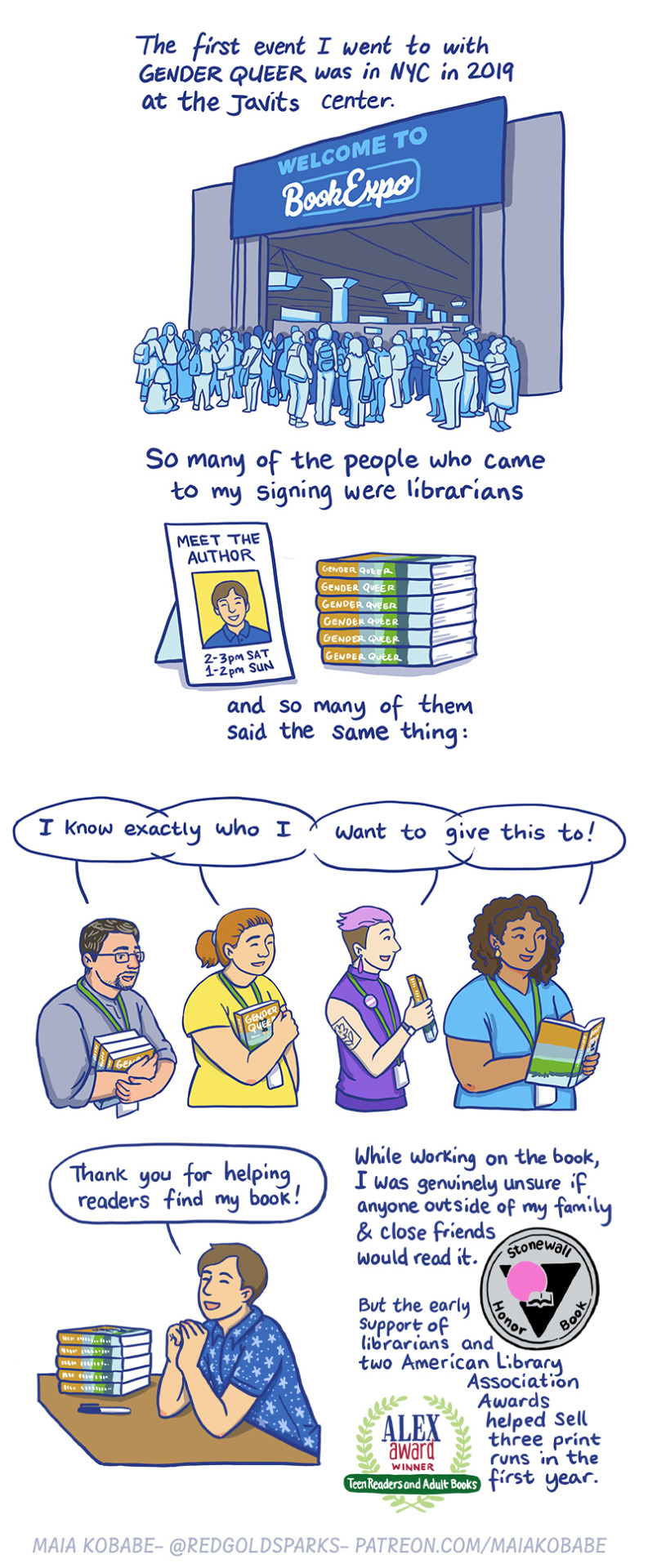
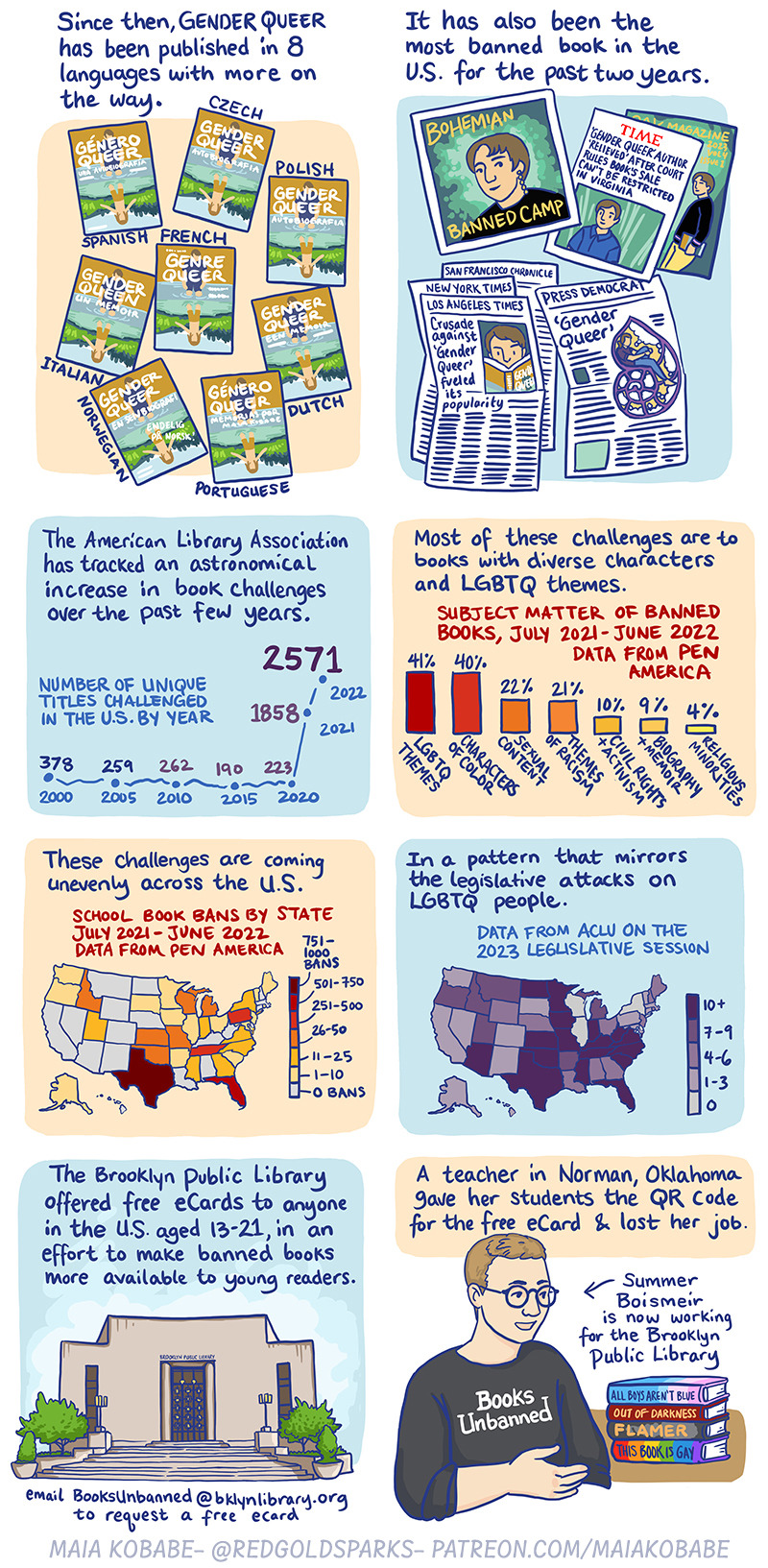



My very last comic for The Nib! End of an era! Transcription below the cut. instagram / patreon / portfolio / etsy / my book / redbubble
The first event I went to with GENDER QUEER was in NYC in 2019 at the Javits Center.
So many of the people who came to my signing were librarians, and so many of them said the same thing: "I know exactly who I want to give this to!"
Maia: "Thank you for helping readers find my book!"
While working on the book, I was genuinely unsure if anyone outside of my family and close friends would read it. But the early support of librarians and two American Library Association awards helped sell two print runs in first year.
Since then, GENDER QUEER been published in 8 languages, with more on the way: Spanish, Czech, Polish, French, Italian, Norwegian, Portugese and Dutch.
It has also been the most banned book in the United States for the past two years.
The American Library Association has tracked an astronomical increase in book challenges over the past few years. Most of these challenges are to books with diverse characters and LGBTQ themes. These challenges are coming unevenly across the US, in a pattern that mirrors the legislative attacks on LGBTQ people.
The Brooklyn Public Library offered free eCards to anyone in the US aged 13-21, in an effort to make banned books more available to young readers. A teacher in Norman, Oklahoma gave her students the QR code for the free eCard and lost her job. Summer Boismeir is now working for the Brooklyn Public Library.
Hoopla and Libby/Overdrive, apps used to access digital library books, are now banned in Mississippi to anyone under 18. Some libraries won’t allow anyone under 18 to get any kind of library card without parental permission.
When librarians in Jamestown, Michigan refused to remove GENDER QUEER and several other books, the citizens of the town voted down the library’s funding in the fall 2022 election. Without funding, the library is due to close in mid-2024.
My first event since covid hit was the American Library Association conference in June 2022 in Washington, DC. Once again, the librarians in my signing line all had similar stories for me: “Your book was challenged in our district"
"It was returned to the shelf!"
"It was removed from the shelf..."
"It was moved to the adult section."
Over and over I said: "Thank you. Thank you for working so hard to keep my book in your library. I’m sorry you had to defend it, but thank you for trying, even if it didn't work."
We are at a crossroads of freedom of speech and censorship. The future of libraries, both publicly funded and in schools, are at stake. This is massively impacting the daily lives of librarians, teachers, students, booksellers, and authors around the country. In May 2023, I read an article from the Washington Post analyzing nearly 1000 of the book challenges from the 2021-2022 school year. I was literally on route to a festival to talk about book bans when I read a startling statistic.
60% of the 1000 book challenges were submitted by just 11 people. One man alone was responsible for 92 challenges. These 11 people seem to have made submitting copy-cat book challenges their full-time hobby and their opinions are having an outsized ripple effect across the nation.
WE NEED TO MAKE THE VOICES SUPPORTING DIVERSE BOOKS AND OPPOSING BOOK BANS EVEN LOUDER.
If you are able too, show up for your library and school board meetings when book challenges are debated. Send supportive comments and emails about the Pride book display and Drag Queen story hours. If you see a display you like– for Banned Book Week, AAPI Month, Black History Month, Disability Awareness Month, Jewish holidays, Trans Day of Remembrance– compliment a librarian! Make sure they feel the love stronger than the hate <3
Maia Kobabe, 2023
The Nib
19K notes
·
View notes
Text

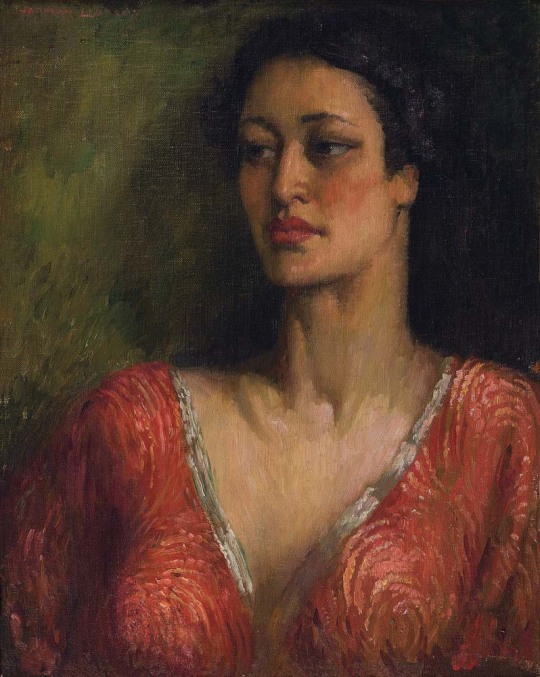



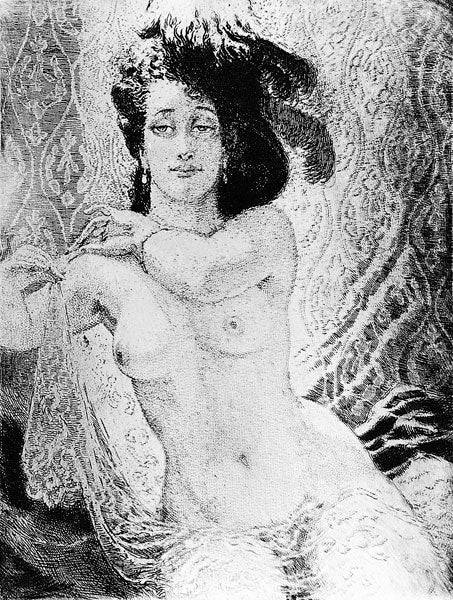
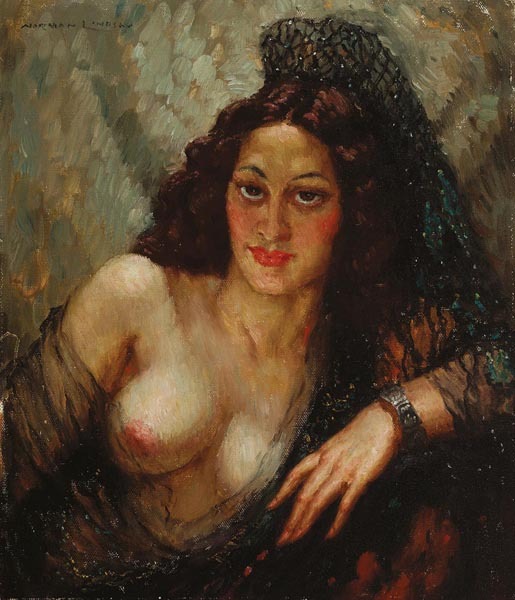

Norman Lindsay - Rita Lee (1938-1942)
The act that the figure of Rita looms large in the oeuvre of Norman Lindsay is no small endorsement, given that the artist worked with approximately 130 models during his highly productive period of the 1930s and 1940s.
Writing to his biographer, Norman Hetherington, Lindsay stated that during ‘the late thirties, when all the uproar of the twenties had died down, I had the best time of my life. The press left me alone when I ceased to be news. I had no exhibitions and sold work through the dealers…’
It was during this period that the artist was introduced to Rita Lee, a statuesque Pre-Raphaelite beauty of Spanish and Chinese parentage, whom Lindsay was to feature in a diverse selection of paintings, ranging from theatrical creations such as Crete 1940 to more decorous examples including Rita of the Nineties 1942.
‘One girl, named Rita, that I painted many times during my attack on oils, was the only one I got results from. She was a quiet, simple creature, very reticent, but she always expressed the emotion of any pose I put her in.’
Lindsay valued not only Rita’s versatility, but also (to borrow a phrase from Arthur Conan Doyle) her ‘grand gift of silence’, stating that ‘She was not a talker. She’d sit aloof and reticent behind her mask. She was a perfect model for oil painting,’ her reticence being ‘…one of her best assets. Chattering models are a nuisance.’
Whether the success of their working relationship was due to the model’s striking looks, her capacity to convey emotion or her ability to let the artist focus on the task at hand (or a combination of all three), as the artist’s granddaughter Helen Glad has noted, ‘Norman Lindsay never did a bad painting of Rita, which is why they are worth so much more than the others.’ (source)
175 notes
·
View notes
Text
➳ 𝐂𝐨𝐫𝐯𝐢𝐝 𝐂𝐫𝐨𝐬𝐬𝐛𝐨𝐰 🪶🏹
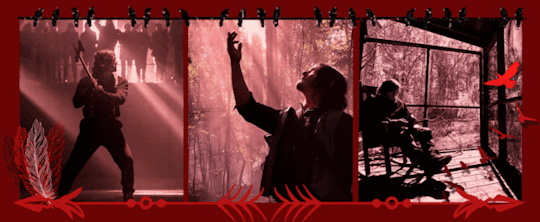
Hey y'all welcome to the absolute dumpsterfire of my brainrot (blog), you can call me Corvid or Harbinger
Ima lover of all things Norman Reedus, n obviously TWD + Daryl Dixon. I also really like crows, and Qrow Branwen from RWBY – hence my user
Below is my masterlist that I'll update w/ time, then more about me. I lurked on here for way too long
❥-》》—————➣
♡ = Sweet ♧ = Angsty ♤ = Smutty
❥-》》—————➣
𝐃𝐚𝐫𝐲𝐥 𝐃𝐢𝐱𝐨𝐧 ♡
➳ Drabbles:
Daryl w/ Hazey by GA ♧
Mother's Day ♡ ♤
Purring ♡ ♤
Hip Bones ♤
Lazy Morning Sex ♤
Daryl Likes Puzzles ♡ ♧
Falling Asleep in Sex ♡ ♤
Shibari ♡ ♤
Father's Day ♡ ♧
➳ Short Stories:
I Like It Long ♤
Double The Fangs, Double The Fun ♤ (vamp + Scud)
Daddy's Little Dhampir ♡ ♧
Intruders ♡ ♤
Total Eclipse Of The Heart ♡
What One Has ♡ ♧
𝐉𝐨𝐬𝐡 "𝐒𝐜𝐮𝐝" 𝐅𝐫𝐨𝐦𝐞𝐲𝐞𝐫 ♡
➳ Drabbles:
Scud's a Nerd ♡
❥-》》—————➣
Requests; are currently open for Daryl & Scud
Req info (please read before sending in 💛)
❥-》》—————➣
➳ Feel free to send me inboxes about other things too!; questions, comments, chatty stuff, etc. I love interacting with y'all!!
➳ I'm kinda a beginner writer (?), I've been doing creative writing for ages + fanfics for myself, this is just my first time posting n stuff
➳ This'll center around Daryl/Norman because he lives in my psyche and I love him
➳ Ima chronic overuser of the 😭, 🙏, 🗿, and ‼️ emojis
➳ English is my main/native language, but I'm also fluent in Spanish
➳ I believe A&W restaurants are a national treasure and I need more of them
➳ According to everyone I know I have a weird accent and dialect and I will admit I do (idk wtf it's even composed of so if I ever say something that makes absolutely no sense or sounds stupid it's probably that)
➳ I am wildly interested in the mechanics of reality and metaphysical things
➳ Aside from TWD & Norman related things, I'm also a lover of RWBY, Lost, House n much more
➳ Frankly I'd just love to engage with y'all on here, so many of you are so talented n I love your works 🫶
#masterlist#daryl dixon#daryldixon#norman reedus#normanreedus#twd#twd daryl#daryl dixon headcanon#daryl dixon imagine#daryl dixon x reader#the walking dead#daryl dixon x y/n#daryl dixon x you#daryl dixon x female reader#twd daryl dixon#daryl dixon smut#daryl dixon fanfiction#daryl dixon fanfic#norman reedus x reader#the walking dead fanfiction
116 notes
·
View notes
Text
One sun pun : Gabriel's tomatoes
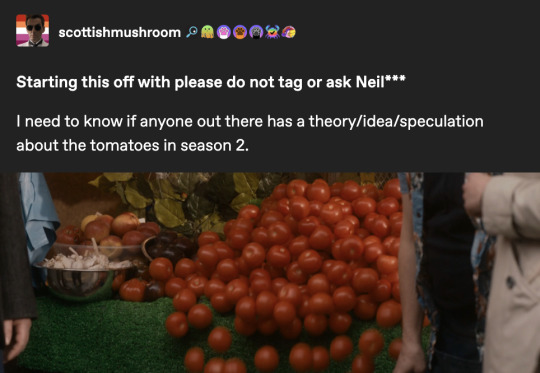
Hello there tomato-wonderer @scottishmushroom. I saw your post about tomatoes and I come bearing fruit answers!
I was also wondering about the tomatoes, and it led me down a spiralling path of tarot cards and visual puns. I'm pretty sure Gabriel's entire entrance scene in season 2 is based on tarot card 19: The Sun. Allow me to explain...
Here is the Sun tarot card in the Rider-Waite deck, which was used as visual inspiration both season's 1 & 2 of GO. Notice anything familiar?



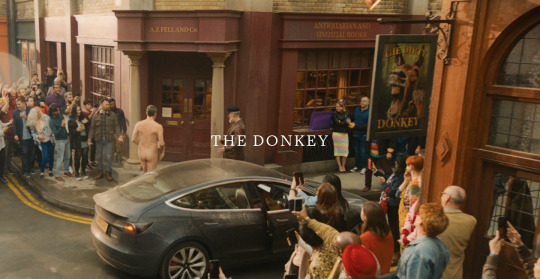


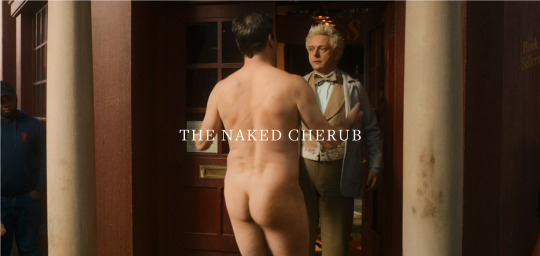
All of the elements of The Sun card are hidden in these opening shots quite cleverly. I am suggesting here that the red banner (that the sun carries on the card) is represented by the spill of red tomatoes because: it's a sun pun!
You see tomato in English & French from the Spanish word "Tomate" that took over in the 1850s, but there's also an older expression for tomatoes that was used since it's import to Europe, that is still the origin of the word in Italian : Pomodoro.
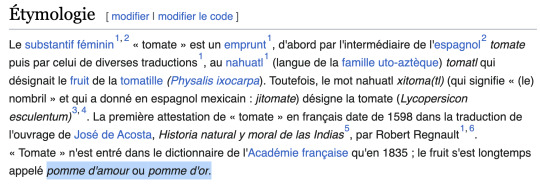
In French we used to call it pomme d'or: just like in Italian today, the French (and the normans who were the reigning class in England) would have called it a Golden or Sun Apple, due to it's need for extreme sunshine to grow.
Which is a great callback to Gabriel's character in season one because of this iconic line:

But that's not all: Tomato was also called "Pomme D'amour" or love apple, due to how it looked like a human heart. So Gabriel walking into Soho triggering a spill of bright red sun-apples also has a double meaning as he steps on one : crushing a heart.
Still not enough sun for you? Well, there's more! While Gabriel is marching into Soho we get a musical number called "Into Soho" on the Prime video series soundtrack. However, once Gabriel gets to the door and knocks, it quickly switches to a preview of a theme we won't hear until episode 6, when Gabriel opens the fly and remembers : it's a track on disc 2 called "Gabriel Revealed".

Yes, haha they made a secret "Gabriel is naked" joke in the soundtrack when he is revealed. The bonkers part comes when your realize what number the track is in the list....

#good omens 2#art director talks good omens#good omens meta#go season 2#go meta#good omens season 2#good omens season two#good omens#archangel gabriel#tarot cards#tarot#good omens puns#good omens analysis
106 notes
·
View notes
Text
Perceptions of Paul as calculating & John's paranoia
“McCartney’s mistake, which he now admits, was to seem invulnerable. […] And yet, he says, the contrast between himself and Lennon, so assiduously cultivated by journalists, was a fabrication. “I wasn’t brilliant at school. I was trouble, just like John. I got caned practically every day, and the only exam I ever passed was Spanish. John and I weren’t black and white, although people took John, for all his aggression, to be the good guy, because he showed his warts. I’ve only just realized, after all this time, that people like to see warts. It makes them sympathetic. I’d always though that, in order to be liked, you had to be unwarty.””
Living with The Beatles’ legacy, the smears that Lennon left behind… and the battle to win my babies back, The Times Newspaper, Monday January 4, 1982.
Paul was the easiest to talk to. He had such energy and such keenness and, unlike John, enjoyed being liked, at least most of the time. I don't see this as a criticism; John himself could be very cruel about Paul's puppy dog eagerness to please.
The irony was, and still is, that John's awfulness to people, his rudeness and cruelty, made people like him more, whereas Paul's genuine niceness made many people suspicious, accusing him of being calculating.
Paul does look ahead, seeing what might happen, working out the effect of certain actions, but he often ends up tying himself in knots, not necessarily getting what he thought he wanted.
I think there is some insecurity in Paul's nature, which makes him try so hard, work so hard. It also means he can be easily hurt by criticism, which was something that just washed over John.
Hunter Davies, Western Mail: The Beatles. (April 9th, 2004)
Even Paul’s immaculate manners could not thaw her. ‘Oh, yes, he was well-mannered–too well-mannered. He was what we call in Liverpool “talking posh” and I thought he was taking the mickey out of me. I thought “He’s a snake-charmer all right,” John’s little friend, Mr Charming. I wasn’t falling for it. After he’d gone, I said to John, “What are you doing with him? He’s younger than you… and he’s from Speke!”’ After that, when Paul appeared, she would always tell John sarcastically that his ‘little friend’ was here. ‘I used to tease John by saying “chalk and cheese”, meaning how different they were,’ she remembered, ‘and John would start hurling himself around the room like a wild dervish shouting “Chalkandcheese! Chalkandcheese!” with this stupid grin on his face.’
Philip Norman, Paul McCartney: The Life. (2016)
“He always suspected me. He accused me of scheming to buy over Northern Songs without telling him. I was thinking of something to invest in, and Peter Brown said what about Northern Songs, invest in yourself, so I bought a few shares, about 1,000 I think. John went mad, suspecting some plot. Then he bought some himself. He was always thinking I was cunning and devious. That’s my reputation, someone who’s charming, but a clever lad. “It happened the other day at Ringo’s wedding. I was saying to Cilia [Black] that I liked Bobby [her husband]. That’s all I said. Bobby’s a nice bloke. Ah, but what do you REALLY think Paul? You don’t mean that, do you, you’re getting at something? I was being absolutely straight. But she couldn’t believe it. No one ever does. They think I’m calculating all the time.
Paul and Hunter Davies, 1981
In the wake of his death you didn’t tour for most of the ‘80s. People suggested that you were scared to go on the road. Was that true?
No. People speculate about anything. They always credit me with motives I haven’t even dreamed of. It’s interesting, the way they sort of perceive my life and analyse it for me. In that case, I never thought about touring much. People used to say, “Oh, it’s 10 years since you’ve toured.” I’d go, “Is it? Y’know, I’m not counting.” That’s all that was, really. I don’t know why. Maybe I didn’t fancy it.
The Q Interview, 2007
Astrid in Germany was always a bit suspicious of Paul at first, though his relationship with Stu was also bound up in this. 'It used to frighten me that someone could be so nice all the time. Which is silly. It's ridiculous to feel at home with nasty people, just because you feel that at least you know where you are with them. It's silly to be wary of nice people.'
The Beatles (Updated Edition) (Hunter Davies)
Paul is the easiest to get to know for an outsider, but in the end he is the hardest to get to know. There is a feeling that he is holding things back, that he is one jump ahead, aware of the impression he is giving. He is self-conscious, which the others are not. John doesn't care, either way, what people think. Ringo is too adult to think about such things, and George in many ways isn't conscious. He is above it all.
The Beatles (Updated Edition) (Hunter Davies)
Paul today is still the public Beatle, giving interviews at fairly regular intervals, being open and honest about himself and his past, his worries and his pleasures. Naturally, as ever, there are people who suspect his motives, putting him down for being too charming. Paul may be a bit of an actor, acting the part of Paul McCartney, the charming superstar, still loved by every mum, which can make him sound rather prissy at times, but I believe he does tell the truth about himself.
The Beatles (Updated Edition) (Hunter Davies)
“My problem is to me, I come over as this very together guy, always got his finger on top of everything: the man with no problems. School – a doddle, got all the exams. This is the sort of image of me. Actually, I had murder getting through exams, like I was saying about being on tour during my GCEs. I was like the kid who was getting the cane. Just like John was, but he [Phillip Norman] makes me the very shrewd, always-going-to-succeed guy, and John is the kind of cute, working-class hero. In actual fact though, John was just as shrewd and ambitious as I was. What does me in is he adds to this image I’ve got; I resent that, because I know I’m not that, and I know I’ve never been that.
Paul McCartney’s thoughts from 1983 on Phillip Norman’s ‘Shout!’
The funny thing is, when Apple [started], everything was laid out on the table, it’s like a Monopoly game. We saw who had what. I suddenly had more Northern Song shares than anybody, and it was like, oops, sorry. John was like, “You bastard, you’ve been buying behind my back.” John saw everything like a Harold Robbins movie, you know, which it was. He’s not incorrect. I couldn’t get over the fact that we were really involved in all this. I think to this day, he’ll not understand. I don’t think he would accept right now, my naïveté in it. I think he still suspects me of trying to take over Apple. He still suspects that when I offered the Eastmans as [managers] instead of Allen Klein, he naturally assumed that I would be taken care of better than the others, and that the Eastmans could never be moral enough to be equal in their judgment and do the Beatles’ thing rather than Paul’s thing. I think they still suspect to this day.
The point I was trying to illustrate is that it wasn’t so much John being a bastard as it was his being suspicious towards me, always being suspicious towards me. There was Northern Song shares. And I swear on any holy book you want, I know he won’t believe it, but I know for sure that I didn’t buy them with the view to— If I was really trying to do it, I could have bought an awful lot more. So it does hurt a little bit that there’s someone who still thinks, like, I’m out to get them, or that I always was. That’s one of the nice things about it— It’s a pity [I never said to John, “Fuck off, I’m not trying to do it”—and never was]. But he knows I was kind of— We were behind the scenes, and we did a few little [things] that we had to do, and our ambitions, and it was never a kind of terrifying skeletons in the closet. It was always just normal—but, uh, they …
All You Need Is Love – Peter Brown & Steven Gaines
SG: Were the other Beatles anti-Linda?
PMcC: Uh, yeah. I should think so. Like we were anti-Yoko. But you know John and Yoko, you can see it now, the way to get their friendship is to do everything the way they require it. To do anything else is how to not get their friendship. This is still how it is with John and Yoko. I know that if I absolutely lie down on the ground and just do everything like they say and laugh at all their jokes and don’t expect my jokes to ever get laughed at, and don’t expect any of my opinions ever to carry any weight whatsoever, if I’m willing to do all that, then we can be friends. But if I have an opinion that differs from theirs, then I’m a sort of an enemy. And naturally, paint myself a villain with a big mustache on, because to the ends of the earth, that’s how they both see me. They’re very suspicious people [John and Yoko], and one of the things that hurt me out of the whole affair, was that we’d come all that way together, and out of either a fault in my character, or out of lack of understanding in their character, I’d still never managed to impress upon them that I wasn’t trying to screw them. I don’t think that I have to this day.
All You Need Is Love – Peter Brown & Steven Gaines
I was never out to screw him, never. He could be a maneuvering swine, which no one ever realized. Now since the death he’s became Martin Luther Lennon. But that really wasn’t him either. He wasn’t some sort of holy saint. He was still really a debunker. “For ten years together he took my songs apart. He was paranoiac about my songs. We have great screaming sessions about them.
Paul and Hunter Davies, 1981
SALEWICZ: Oh, he was presumably very paranoid.
PAUL: I think so. I mean, he warned me off Yoko once. You know, “Look, this is my chick!” ’Cause he knew my reputation. I mean, we knew each other rather well. And um, I felt… I just said, “Yeah, no problem.” But I did sort of feel he ought to have known I wouldn’t, but. You know, he was going through “I’m just a jealous guy”. He was a paranoid guy. And he was into drugs. Heavy.
September, 1986 (MPL Communications, London)
Miles says, “I think Jane was always a bit irritated by John. Because he was so acerbic and difficult to get on with. And paranoid. He didn’t make life easy. I suppose it’s a sort of rapier wit, but it was usually just plain ordinary rudeness. There was nothing special about it.”
Paul McCartney profile for FAME Magazine (March 1990)
“They [Lennon & McCartney] saw each other again in 1977. The Lennons and McCartneys ate dinner together at Le Cirque, Paul’s favourite French restaurant in New York. John regretted going; it was a loathsome night. Paul and Linda blathered on and on about how perfect their lives were, how they had everything they’d ever wanted, and how they were as happy as they’d ever been. Something very paranoid suddenly occurred to John. Maybe Lorraine Boyle was spying on him for the McCartneys! He woke up the next morning still feeling disturbed; he consulted the Oracle. Swan assured him that Paul and Linda were frustrated and unsatisfied. Their marriage was in trouble, he said, predicting it would break up within the year. Lately Swan’s visions had been astonishingly accurate. Relieved, John began composing a song—a little ditty, really, that would never be released—in praise of the Oracle’s powers. But he still couldn’t understand why Paul and Linda had been together for as long as they had. There appeared to be a psychic connection between John and Paul. Every time McCartney was in town, John would hear Paul’s music in his head.”
Robert Rosen, Nowhere Man: The Final Days of John Lennon, (2000)
JOHN: […..] And he’s (Jagger) goin’ on about “he never calls. Do you think he ever calls? He never calls me. And he keeps changing his phone number all the time… And he’s hiding behind the kid.” I was hurt by it! You know… The fact that… A, I never call anybody. It’s not pride, it’s just that I never, ever have.
REPORTER: Why?
JOHN: I never call the other Beatles, I never call anybody. They always call me.
REPORTER: Why?
JOHN: Cos I’m self-involved! I’m paranoid, too. I don’t like phones… There’s nobody on this earth ever got a call from me that isn’t related, probably. Or a very old friend…
Sept 1980 – John
“Yoko was an extremist and was even more intense than John taking any idea or comment of his to the limit. If, for example, he complained about any of his fellow Beatles she would hint that that Beatle had always been an enemy implying that John should never deal with that person again. Her extreme positions fascinated John and help him take his mind off himself but when she became self-involved and paranoid herself -her paranoia usually dealt with her career, her fame and the fact that even though she had always been famous everyone conspired to keep her from getting even more famous- he had no place to turn. His insecurity about his solo career, his childhood, his relationships with the other Beatles, the way the public perceived Yoko overwhelmed him and he became more and more involved with drugs.”
May Pang, Loving John (1984)
John was lucky. He got all his hurt out. I’m a different sort of a personality. There’s still a lot inside me that’s trying to work it out. And that’s why it’s good to see that wedding-funeral bit, because I started to think, ‘Wait a minute, this is someone who’s going over the top. This is paranoia manifesting itself.’ And so my feeling is just like it was at the time, which is like, He’s my buddy, I don’t really want to do anything to hurt him, or his memory, or anything. I don’t want to hurt Yoko. But, at the same time, it doesn’t mean that I understand what went down.
Paul McCartney: An Innocent Man? (October, 1986)
Some three year later, during the making of Abbey Road, Lennon installed a twin bed in the studio so that Yoko, recuperating from a car crash, could survey proceedings and pass comment though a mike he had suspended over her. The other Beatles positioned themselves around the room as best they could. Yoko would later tell Paul that if, for any reason, he’d seemed to be standing too close to her, all hell would break loose when John got her home. Lennon, she said, was ‘very paranoid’ like that.
McCartney by Chris Sandford
But we were actually quite supportive. Not supportive enough, you know; it would have been nice to have been really supportive because then we could look back and say, “Weren’t we really terrific?” But looking back on it, I think we were okay. We were never really that mean to them. But I think a lot of the time John suspected meanness where it wasn’t really there.
Paul McCartney, interview w/ Chris Salewicz for Musician: Tug of war – Paul McCartney wants to lay his demons to rest. (October, 1986)
#the beatles#paul mccartney#john lennon#mclennon#i wonder how much of their issues were due to john suspecting paul of things that just weren't true#then again maybe paul is secretly an evil mastermind#can't put it past him
91 notes
·
View notes
Text

'the norman foster-inspired entrance to the nightclub velvet (alfredo arribas + miguel morte, 1988), which is themed on david lynch's 1987 movie, blue velvet' in spanish design + architecture - emma dent coad (1990)
140 notes
·
View notes